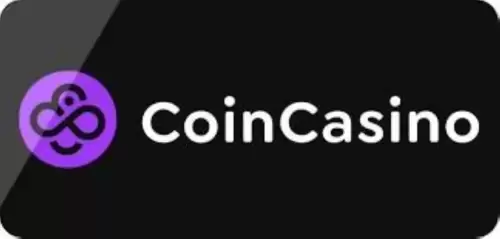 |
|
 |
|
 |
|
 |
|
 |
|
 |
|
 |
|
 |
|
 |
|
 |
|
 |
|
 |
|
 |
|
 |
|
 |
|
Cryptocurrency News Articles
Litecoin: Is 'Digital Silver' Still a Good Bet in Today's Crypto World?
May 19, 2025 at 02:30 pm
Charlie Lee, who used to work at Google, created Litecoin (LTC) back in October 2011. He imagined it as a lighter, quicker version of Bitcoin

Litecoin (LTC) was created by former Google engineer Charlie Lee in October 2011 as a lighter, faster version of Bitcoin, aiming for transactions that were faster, cheaper, and smoother for small, daily purchases like coffee. People often call Litecoin “the silver to Bitcoin’s gold,” and it was one of the first “altcoins” to really make its mark, a position it still holds in today’s crypto space.
Where Litecoin Came From and What It Aimed to Do
Charlie Lee put Litecoin’s code on GitHub for everyone to see on October 7, 2011, and the network itself started running just a few days later, on October 13. Lee wanted to create a crypto that could get around some of Bitcoin’s headaches, like transactions being slow and mining becoming concentrated in a few big players. So, he built Litecoin to be better for buying your coffee or other small, daily purchases, thanks to faster confirmations and lower fees.
Think of it like this: if Bitcoin was becoming “digital gold” (something you hold onto for value), Litecoin was meant to be “digital silver”—more like everyday digital cash people could actually use. It wasn’t trying to replace Bitcoin, but to work alongside it, much like silver and gold do in the regular markets.
How Litecoin Works Under the Hood
Here are a few key bits of tech that set Litecoin apart:
Litecoin’s Journey and How It Stacks Up Against Bitcoin
Here’s a look at some aspects of Litecoin’s story, especially when you compare it to Bitcoin:
Even though it was one of the first and many people know its name, Litecoin has faced tougher times as the crypto market got more crowded with new coins. Still, it remains a big name in digital money, with work always being done to improve it, especially for use as a way to pay for things. A non-profit group, the Litecoin Foundation, really pushes for more people to use and develop Litecoin.
A Look Back at Litecoin’s Price and Market Value
Litecoin didn’t start with a bang price-wise. When it first appeared on exchanges in 2011, you could pick it up for around 30 cents. It had a big early surge between November and December 2013, when the price went up to $44.73. But then came a tough “bear market,” which was made worse by the Mt. Gox exchange hack in 2014. Due to this, Litecoin’s price went down drastically and mostly stayed between $2 and $4 for a few years.
However, when the whole crypto market went wild in 2017, Litecoin soared to levels no one had seen before. It rose over 500%, reaching $358.34 in November and December of that year. Its highest price, according to CoinMarketCap, was $412.96, attained on May 10, 2021. On the flip side, its lowest price was $1.15, reached on January 14, 2015.
Fast forward to mid-May 2025, and Litecoin is trading somewhere around $80 to $85. Its total market value is about $6.0 to $6.4 billion. Right now, about 74.67 million LTC are in circulation, out of a total possible 84 million. Through all the ups and downs, Litecoin has nearly always been one of the top cryptocurrencies when ranked by market capitalization.
Litecoin’s Ups and Downs: The Big Market Swings
Litecoin’s price has seen some wild rides, usually following the broader trends in the crypto market, with Bitcoin often being the main driver of these changes.
What Big Moments Have Moved Litecoin’s Price?
Several key events and ongoing trends have really shaped how much Litecoin is worth over time:
How Healthy is Litecoin’s Network and What’s Being Built?
1. Latest Fixes and Features: The main Litecoin software, Litecoin Core, keeps getting updates. Version 0.21.3 came out in March 2024, bringing important security fixes and new MimbleWimble (MWEB) features. These include things like P2P messages for “light” clients (lighter, simpler wallets) and better ways for hardware wallets to work with MWEB using PSBTs (a standard for transactions that aren’t fully signed yet).
2. MimbleWimble (MWEB) Upgrade: This upgrade, which went live in May 2022, was a huge step for Litecoin. MWEB allows users to choose to make their transactions private, also blurring the amounts being sent. This should make Litecoin more appealing to those who value privacy. By early 2025, reports stated that about 27
Disclaimer:info@kdj.com
The information provided is not trading advice. kdj.com does not assume any responsibility for any investments made based on the information provided in this article. Cryptocurrencies are highly volatile and it is highly recommended that you invest with caution after thorough research!
If you believe that the content used on this website infringes your copyright, please contact us immediately (info@kdj.com) and we will delete it promptly.





























































